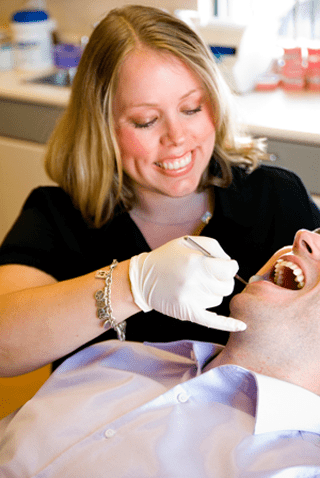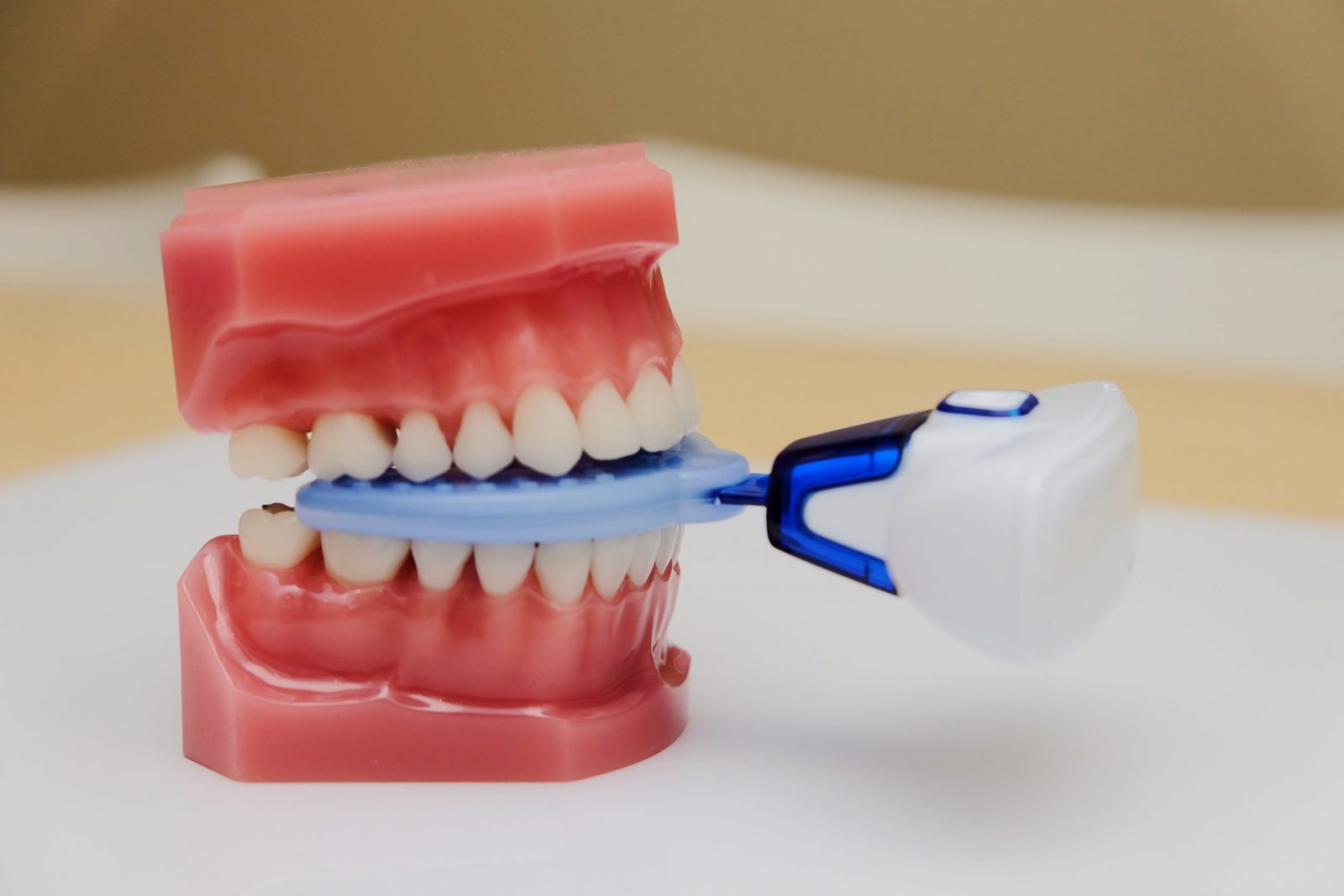Updated March 20, 2021
Having straight teeth and a beautiful smile is something that you want. The question is “what is better for me…crowns or braces”? To know which type of treatment is better for you, it is important to know what their advantages and disadvantages are before you decide.
Advantages of Dental Crowns or Veneers
- Good Esthetics – Dental crowns or veneers are made of porcelain, a material that can mimic the color and the appearance of a real tooth. They are great and are needed in cases where teeth are discolored due to internal stains, are chipped or fractured, are badly broken down by cavity, have large fillings or are worn down.
- Fast Results – They can mask some minor imperfections of your smile in a matter of a couple of appointments. It can be a quick solution to your problems.
Disadvantages of Dental Crowns or Veneers
- Removal of Tooth Structure – Each tooth that needs a crown or veneer has to be “prepared” or shaved down before they are cemented on your teeth. Because these teeth will never be the same as before, preparing healthy teeth that are in perfect condition purely for the purpose of esthetics may be too invasive.
- High Maintenance – Maintenance of crowns and veneers is even more important because any gum disease or cavity can create a lot of problems and oftentimes they will need to be replaced when these problems occur.
- Inability to correct bite problems – Crowns and veneers can only mask very minor problems. Crowns and veneers will not be able to solve problems like overbite, deep bite, underbite, narrow arches and/or crossbite.
- Cost – Depending on the area and the amount of insurance coverage, each dental crown or veneer can cost $1000 or more.
- Longevity – Usually crowns or veneers last 10-15 years, even with great home care. They may need to be replaced from time to time. Improper bite or grinding/clenching habits may cause cracks or chipping of the porcelain.
 Advantages of Orthodontic Treatment
Advantages of Orthodontic Treatment
- Comprehensive Care – Orthodontic treatment is a comprehensive treatment that addresses all the issues so that you will have straight and properly functioning teeth at the end of treatment.
- Longevity – Braces are temporarily glued onto your teeth, leaving your teeth are just the way they were before orthodontic treatment at the end. Your very own natural teeth can last forever if they are well taken care of. No need to worry about replacement of restorations.
- You have options! – There are many different types of braces that you can choose to cater your lifestyle. There are traditional metal (with or without colors) and clear braces as well as clear aligner systems (such as Invisalign). Also, lingual braces (braces that are mounted on the back of your teeth so they are truly invisible) are ideal for those adult patients who highly value esthetics.
- Cost – Although the cost of orthodontic treatment can be high initially, it is usually a one-time cost. When retainers are worn properly, patients who had braces before rarely need to have braces again. Think of it as spreading the cost of braces treatment over a lifetime. This cost is much less than crowns and veneers, which usually need replacements from time to time.
Disadvantages of Orthodontic Treatment
- No Instant Gratification – Depending on the severity of the problem, orthodontic treatment usually takes approximately 18-24 months, on average.
- Multiple Visits – Each patient needs to have their routine orthodontic adjustments every 4-8 weeks.
- Temporary Discomfort – Every orthodontic patient will experience an adjustment period when braces are first put on. Discomfort of teeth and the change of eating and speaking habits are the common complaints but these problems usually go away in 1-2 weeks after initial placement of braces.
When considering what approach is the best for you, it is important to know the advantages and disadvantages of the options that you have. It is also important to have the long term health and stability of your teeth in mind. Dental crowns and veneers are a good option for those that have very minor problems or have problems that cannot be resolved with orthodontic treatment, such as chipped or discolored teeth. However, when the problems are more than just mild rotations or spaces, comprehensive orthodontic treatment is the more appropriate option. Empower yourself with a complete understanding of all the possibilities-contact our office and schedule your complimentary consultation today at our Surrey or Vancouver location.
I hear veneers or crowns are an alternative to tooth straightening. What’s the difference?
There are many ways of improving the esthetics of your smile. Covering the natural tooth with ceramic crowns or veneers is a common method for improving the appearance of the front teeth. Veneers are a thin ceramic shell that can be adhered on the front surfaces of your teeth with or without reducing the size of the teeth. Crowns typically require much more tooth structure reduction as compared to veneers and completely covers all surfaces of the natural tooth. Both crowns and veneers can benefit patients who have significant wear or deficiencies to their natural teeth and can improve the overall shape, size and color of the teeth. However, when the natural teeth are crooked, placing veneers or crowns on these teeth to make the teeth look straighter may require significant removal of natural tooth structure. More ceramic material will likely be needed to cover the crooked teeth.
Straightening your teeth orthodontically preserves the natural tooth structure and allows improvement in overall smile esthetics without the need for ceramic materials being used to cover the teeth. There can also be improvements to the overall bite that can protect your natural teeth from wearing out in areas that are undesirable. While crowns and veneers are excellent options for improving the shape, size and color of teeth, seeking a consultation with your orthodontist prior to any esthetic work to evaluate the bite is worthwhile for the longevity of these future restorations.
I am planning to get veneers or crowns but also want my teeth straightened…
Should I get veneers/crowns or get my teeth aligned first?
Orthodontic tooth straightening typically should come before veneers or crowns are placed for the following reasons:
- The dentist may require additional space between the teeth so they have enough room to place a veneer or crown on the tooth. Orthodontists can make enough space for the dentist prior to them making your crowns or veneers.
- Your orthodontist can coordinate with your dentist in putting the teeth that are to have crowns or veneers in the optimal position so that the restorations can be long lasting and fit well with your bite.
- Restorative dentistry such as veneers or crowns can make it difficult for orthodontic appliances (ie. braces or Invisalign) to adhere to the surface of your teeth.
- Braces or Invisalign may damage crowns, bridges, and veneers.
In some cases, it is necessary to get crowns before orthodontic tooth alignment (ie. a big cavity on a tooth that necessitates a crown). Before the final crown is to be cemented in place, a temporary crown will be placed while your teeth are moved. There is always a risk that temporary crowns can come loose during orthodontic tooth movement. Your orthodontist will monitor this at each appointment.
If I Have Crowns or Veneers, Can I Still Get Straighten My Teeth?
Yes, it is possible to still move your teeth that have crowns or veneers. Typically a different protocol will be used to glue braces or Invisalign buttons on these teeth as compared to natural teeth. There will be a risk of minor blemishes to the ceramic when removing glue from orthodontic appliances, but there are ways of polishing the ceramic back to the way it was before orthodontic treatment.
What about dental implants?
The placement of dental implants in areas of missing teeth has grown increasingly popular over the years. When teeth have been missing for a long time, teeth that are next to the missing space are prone to migrating and narrowing the space that was left by the teeth that used to be there. Dentists often find trouble placing implants in narrow spaces and may refer patients to an orthodontist to have these spaces opened back up for future placement of a dental implant.
If you have dental implants or a bridge, it is still possible to get teeth straightened. with some limitations. Since dental implants are permanently embedded in the bone, these implants cannot be orthodontically moved. Therefore, dental implants may restrict the amount of movement of your teeth if they are placed prior to orthodontic tooth movement. It is thus advisable to have dental implants placed after orthodontic tooth movement so that space can be made and maintained by your orthodontist for future implant placement without restricting the movement of the other teeth.
What About Root Canal or Other Conditions?
Teeth with a history of root canal can still be moved orthodontically if the root canal is healthy and sound. A thorough evaluation of the current condition of the root canal treated tooth will need to be done by the dentist or endodontist (root canal specialist) prior to starting orthodontic tooth movement.
Some root canal treated teeth with a history of trauma, however, may need to be evaluated for a condition known as ankylosis. Ankylosis is a term used when the roots of the teeth have fused with the adjacent bone and are immovable. This is an uncommon condition, but often leads to teeth being submerged within the bone. Trauma is a common cause for ankylosis and any history of trauma to the teeth will need to be reported to your orthodontist during the initial consultation.
About the Author
This article is written by Dr. Kevin Lee, an orthodontist at PacificWest Dental in British Columbia. Dr. Lee spent three years at UBC to complete graduate training in orthodontics. He is a fellow of the Royal College of Dentists of Canada, and diplomat of the American Board of Orthodontics. He is also a part-time clinical instructor of the Graduate Orthodontic Program at the University of British Columbia.

Hello, I’m Dr. Kevin Lee, an experienced orthodontist, and I proudly welcome you to Pacific West Dental. With a passion for creating beautiful, confident smiles, I have dedicated my career to providing top-tier orthodontic care.
Established with a commitment to personalized treatment and patient comfort, Pacific West Dental is your trusted destination for achieving the smile you’ve always dreamed of.
Services we provide:
– Invisalign
– Braces
– Lingual Braces
– TMJ
– iTero
– Laser Therapy
– Sleep Apnea
– Dysport Cosmetic Injectables
– Lightforce Braces







